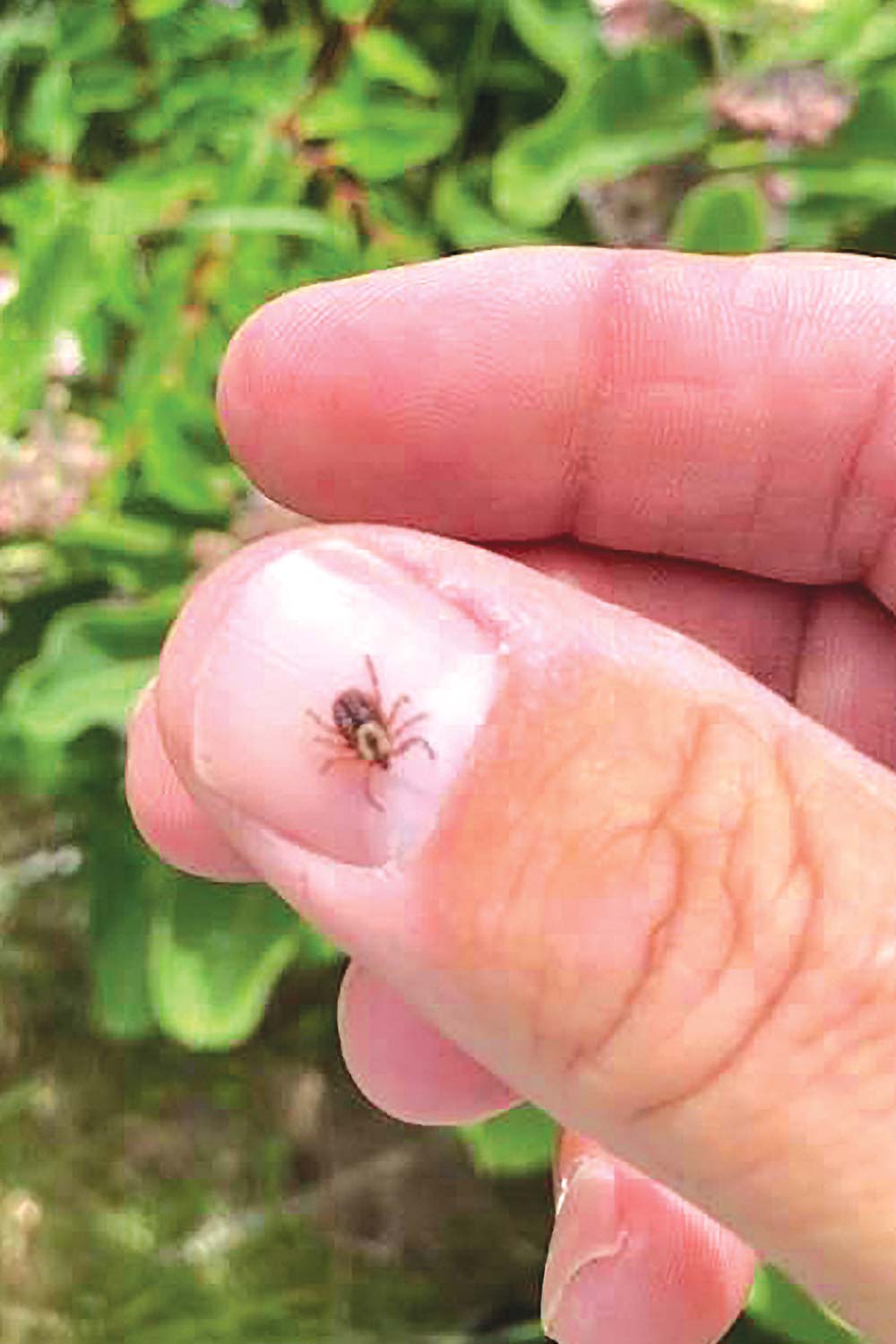
A tick sits on an individual’s thumb during tick season.

A female tick can lay thousands of eggs.
Shilo Stag
On this Base and its hinterland, many of us may have lost the battle dealing with wood or “dog ticks” in early March while enjoying hikes through grassy areas with our dogs in and around the Sprucewoods trails.
Thinking our battle is finally done, keep your eyes open for a “blood sucking” tick which has invaded all areas of Manitoba — the deer or “black-legged” tick.
Both types of ticks — wood or deer — cannot fly and they hang on tall grass with their little front legs outstretched and grab on when someone or something brushes past unsuspectingly.
The wood tick is a parasite which does not transmit diseases, but the deer tick does carry a bacterium called Borrelia burgdorferi which can cause Lyme disease. This bacterium is spread to the host when the tick bites.
What makes this tick more of a pest? The deer or black-legged ticks are active during the spring months and well into the late fall months — remaining active until the first permanent snowfall or when air temperatures are consistently below four degrees Celsius.
What about tick removal?
The majority of people are unaware they have been bitten by a tick as the bites are usually painless.
When a tick is found attached on your body, removal can become tricky, especially if you are alone and the tick is in a hard-to-reach area.
Ticks are most effectively removed with a fine pair of tweezers. The tick should be grasped as close to the skin as possible.
The feeding site should then be cleaned after the tick is removed.
Other methods such as using Vaseline, a match or soap is not recommended and can cause the insect to burrow deeper and release more saliva, which increases the chances of disease transmission.
The tick can then be placed in a small crush-proof bottle with a piece of moistened paper towel and taken to the Preventive Medicine Department — Base hospital — for identification.
Take note of where you get bitten by any tick.
If you see any unusual or extreme reaction to the bite, see your family doctor.
Occasionally some people may develop a secondary infection from a wood tick bite which requires medical attention.
If the tick does carry the bacteria, approximately 70 to 80 per cent will develop a rash three to 30 days after a bite from an infected tick.
This rash, known as Erythema migrans (EM), resembles a “bull’s eye” and is not tender or itchy.
The other early symptoms of Lyme disease include: a rash other than EM, headache, fatigue, chills, fever, muscle aches, joint pain or swollen lymph nodes.
Lyme disease is successfully treated with antibiotics.
How can an outdoor enthusiast avoid picking up a tick hitchhiker from latching while out in the wilderness from spring to fall?
When walking or hiking in wooded or grassy areas take the following precautions:
- walking down the center of trails rather than the trail margins;
- wearing shoes, long pants tucked into socks and long-sleeved shirts;
- wearing light coloured clothing to make it easier to spot ticks crawling on you;
- using spray repellents containing DEET on your clothes and exposed skin;
- using a “buddy” system for checking each other; and
- finally, showering within two hours of returning from a risk area inspecting for ticks, particularly in the arm pit and groin.
Unfortunately, ticks are a part of our environment and although we may not always appreciate their subtle beauty and highly specialized way of life, care and attention will help you work and relax more comfortably in the spaces we share.
For more information on Lyme disease and deer ticks, contact the Preventive Medicine Department at 204-765-3000 ext 3159 or 4405 or online at www.phac-aspc.gc.ca/id-mi/lyme-fs-eng.php .

